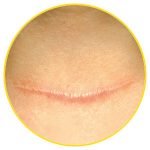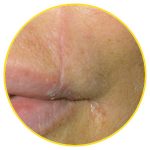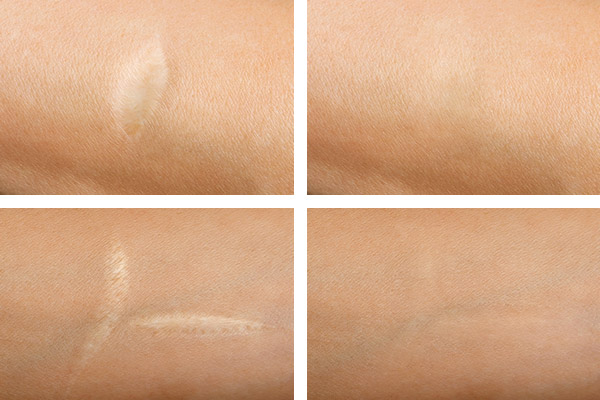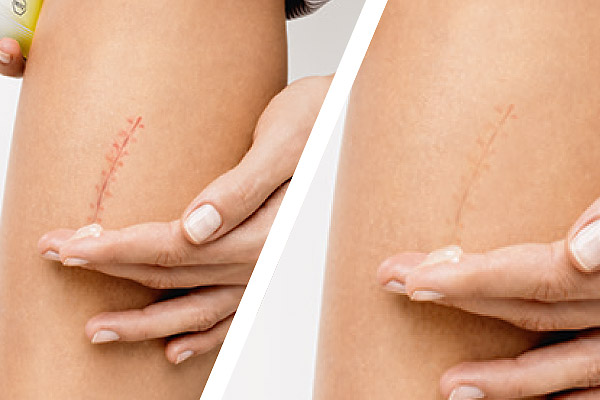Some scars do not heal ideally and develop into problematic scars. The most common are:
 Raised or hypertrophic scar
Raised or hypertrophic scar
A hypertrophic scar forms shortly after the healing of the wound and is caused by overproduction of connective tissue fibres. The scar tends to bulge and project above the level of the surrounding skin, although it remains restricted to
the region of the original injury. Hypertrophic scars are especially common when the wound has not been immobilised or protected, or if it has become infected.
 Sunken or atrophic scar
Sunken or atrophic scar
When scar tissue covers a wound but not enough tissue is produced to fill out the damaged area sufficiently, this is known as an atrophic scar. These sunken scars are particularly common after acne or chickenpox.
 Overgrowing scar or keloid
Overgrowing scar or keloid
A keloid tends to form long after the wound has healed. This is caused by a massive overproduction of connective tissue fibres, which continue to grow over the wound and onto healthy skin, like the claws of a crab. Keloids particularly
affect girls and young women. Scars on parts of the body with high skin tension are also susceptible to keloid formation. Quite frequently, a genetic tendency to develop keloids is inherited. Keloids also occur up to ten times more
frequently in people with darker skin than in people with white skin.




